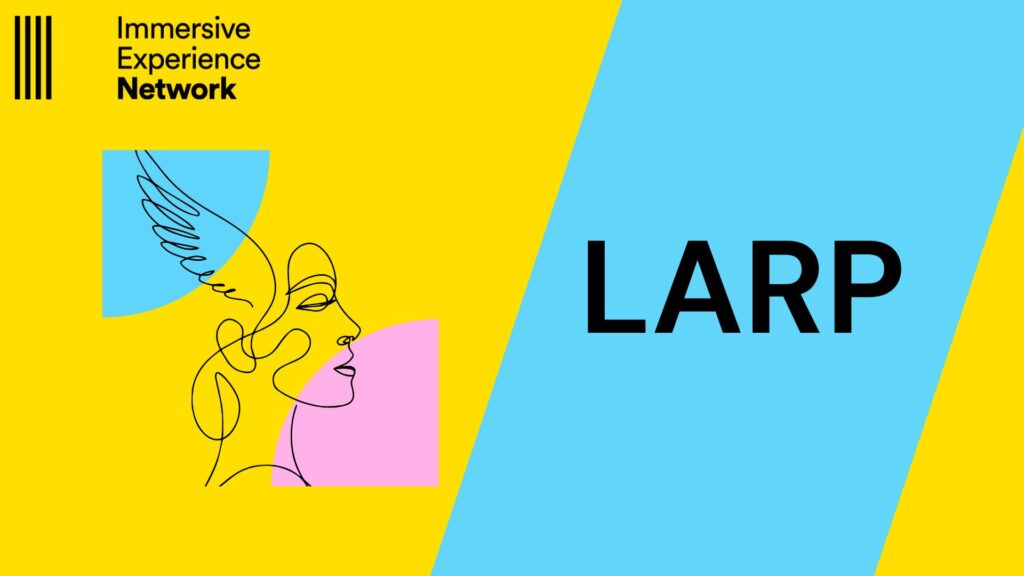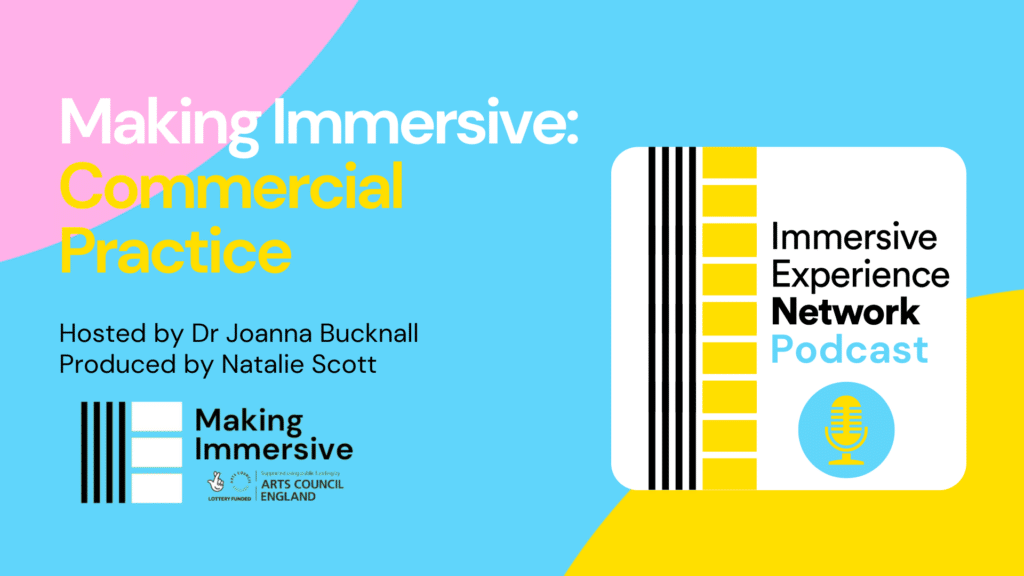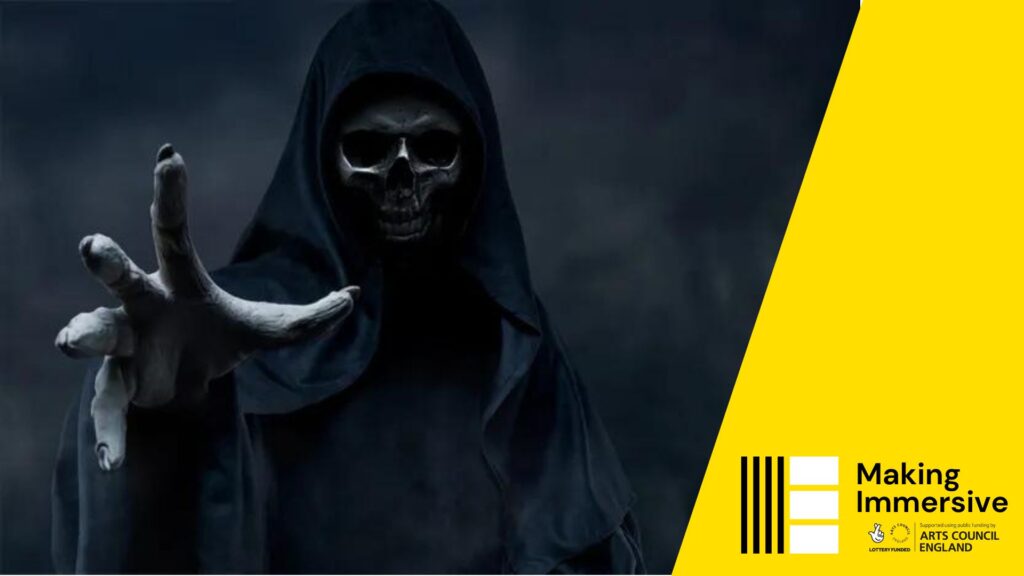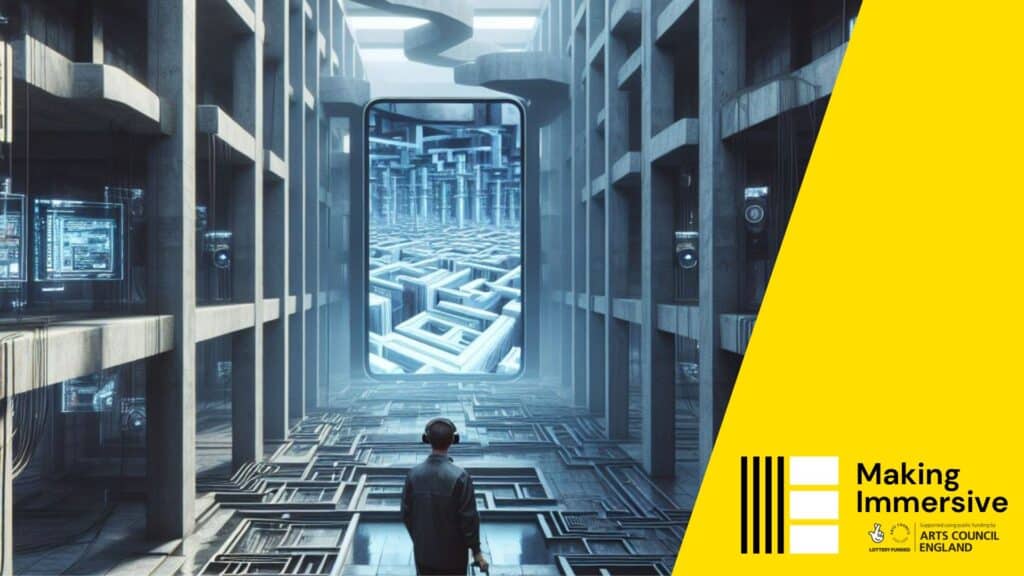Riptide create immersive, interactive and digital experiences across many forms. Audiences are swept through the narratives, spaces and cities in which our performances occur.
Since 2014, Riptide have been making work which places the audience at the heart of the experience, combining innovative storytelling with digital technologies. These experiences may be as varied as encounters in secret corners of a confetti-filled nightclub, an intimate, pervasive and personalised performance for one audience across an entire month or a guided journey through city spaces accompanied by smartphone and GPS technology.
Riptide’s work combines the artistry of immersive theatre, the thrill of being inside a real-life Black Mirror episode and the interactivity of your very own Truman Show.
Intermission is a new unique immersive experience with care at its core made by Riptide. The experience opened in Leeds in November last year and guided audiences on an individual journey through a series of ‘therapeutic treatments’, each mindfully designed to reflect and reconnect with yourself.
Have you ever wished that you could press pause on the fast pace of your life? Take a little time out? Maybe go to bed and watch the second half tomorrow? What if you could take a moment to breathe in, mull over the story so far and then decide what happens next?
Well, now you can…welcome to your Intermission.
Developed and delivered by a team of mental health professionals, life coaches, yoga instructors, performers and masseuses, the show is grounded in a commitment to holistic health and wellness. It is hard to give a sense of the level of design in the show, each of the 11 rooms was designed in a totally different way. To give a flavour; in one you are met by a spa-like treatment room, the next a light Japanese writing room, the next a dark, wooden confession booth, the next you find yourself in the clearing of a field of wheat.
Innovative technology and scientific research is infused with meditation and spa rituals, to produce a bespoke experience tailored to each participant.
When making a new experience with Riptide I think we do things a little differently. We have never started with a text for example. More often than not, we start with a question to answer or an audience experience we want to create. Previous examples of this are;
- What would it be like to give audiences the experience of breaking into a flat and stealing something?
- What would it feel like to connect with a stranger who shares your values and beliefs over the course of several weeks?
- How can we give participants the feeling of being Truman in their very own Truman Show?
Intermission’s question was: How transformative and therapeutic can we make immersive performance? How can we genuinely care for audiences?
My professional history includes working for companies like Punchdrunk and You Me Bum Bum Train. I have a real fascination with both testing the possibilities of immersive work and specifically what is possible when things are down to the one-on-one level. I argue this is when immersive theatre is at its best and can make the most impact. For Intermission my mission was for each audience to feel as though they had been given their very own show.
A Riptide trope is our pre-experience questionnaires. We know a lot about our audiences before they arrive at our shows. Intermission was no different but this time we built an AI-host which enabled us to make the pre-experience bespoke to audiences but also scalable.
So, Intermission begins well away from the secret venue, and begins online with help from an AI called Amy. Amy welcomes you to the experience and proceeds to ask you a series of questions. They start off quite mundane and pragmatic (email, allergies, access requirements) but quickly become more intimate and profound. (How do you take your tea/coffee? Who is a significant other? What do you aspire to become?)
Every single interaction with Amy is different from the last, she follows a loose script but responds and often improvises to give audience members their own bespoke experience.
Much of the development period was testing different prompts and ensuring she had the right tone or didn’t reference something that there was no chance we could offer. “We look forward to welcoming you to our luxury villas at Intermission”….err no Amy we can’t do that. Interestingly this process was almost identical to how we train actors in immersive work. We talk through the text framework, where the areas of improvisation are, all the contingencies (the ‘what happens if…? moments’), what instructions they need to give and about their on/offboarding. For Amy, it was exactly the same. We had to take Amy through her very own virtual rehearsal process and took as much care and consideration as we did to the physical audience experience of the set, light, sound, smells etc. We needed Amy to fit with the world, style and feel of the spa-like environment.
A real milestone in our build was when we got Amy to remember and reference previous answers in her current response. She remembered what you said and seemed understand it! For us, this changed her from a simple chat bot to something that some of our audience members thought was a human user. Several audience members arrived at our reception desk and asked for Amy (either in jest or genuinely expecting a receptionist!). For us, this was one of the key achievements of the whole project, to design an AI experience which could genuinely enhance the therapeutic aspect of the show, could do it at scale but remain personable.
There were a lot of risks to doing this though, to trust an AI to open the experience without human intervention was nerve-wracking as an artist. It was therefore critical to get it right and not to rush the coding. I must emphasise we spent a lot of time developing to ensure this element was sympathetic to our world, and was robust enough to go live to the public. We have seen examples more recently where AI has been expected to deliver artistic content in immersive experiences – where this level of care, attention and technical know-how has been missing with dire (but viral!) consequences. This is not something you can use as a shortcut.
My main take-away from this is that the people making the prompts and creating the code are the artists/directors. We couldn’t have done this without our Creative Technologist, Max Palmer. What Max does is like computer wizardry, I trained in directing and have very little experience in this. My advice for anyone like me: find a coding wizard! His expertise in how you code and test enabled us to create Amy. I was able to guide the process in pre-production and did this by trying to answer the questions mentioned above. What in the elements of the technology allows us to create something bespoke? There are two different sides to this development what is happening on the front-end (what it looks like to audiences) and the back-end (the code ‘under the hood’ – everything practical). Luckily for us, Max can do both.
The pre-experience questionnaire allowed us to adapt each audiences journey to make it bespoke to them. Their likes/dislikes, how they take their tea, and names of significant people in their lives came into their experience. The next step for us as a company is how we can integrate AI further into the technological aspects of the show. There was a VR room for example, and we are experimenting to see if AI can help us generate content in VR in a bespoke way.
Intermission was a massive step forward for us as a company in how we can integrate technology into our live experiences. My overriding feeling is the care and attention to how this is built, tested and integrated is everything. It is like a rehearsal process of its own. For those looking to do similar things in your own work, I would invite you to think about what the technology enables you to do. Why are you choosing this tech over the analogue version of it? Is it just there because it is a shiny piece of new tech? What function does it serve? And more importantly, what audience experience are you creating by integrating it?
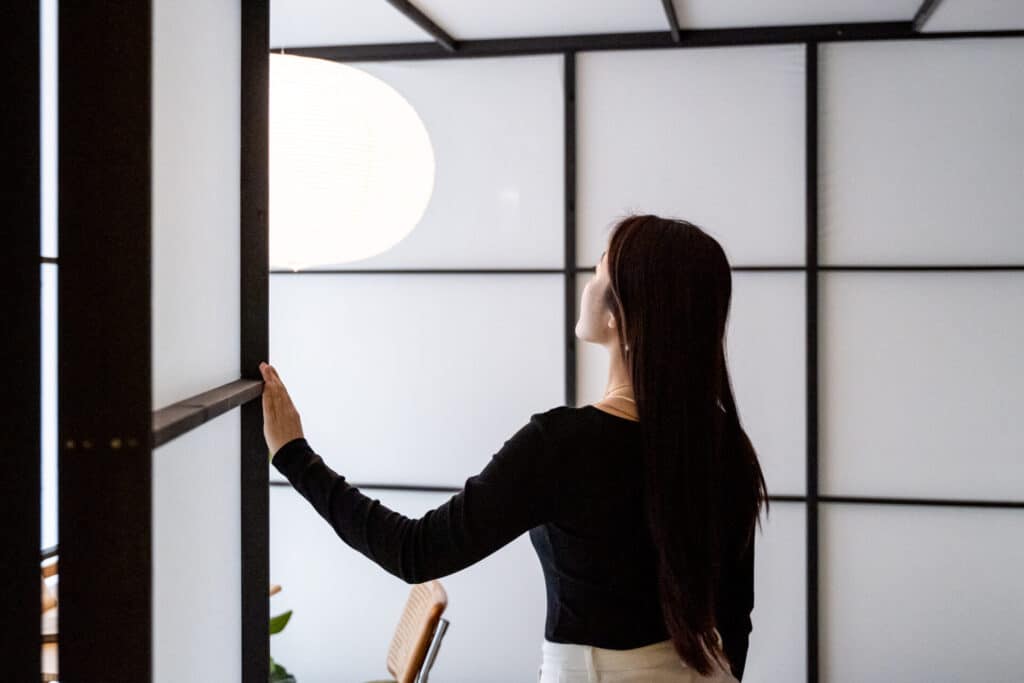

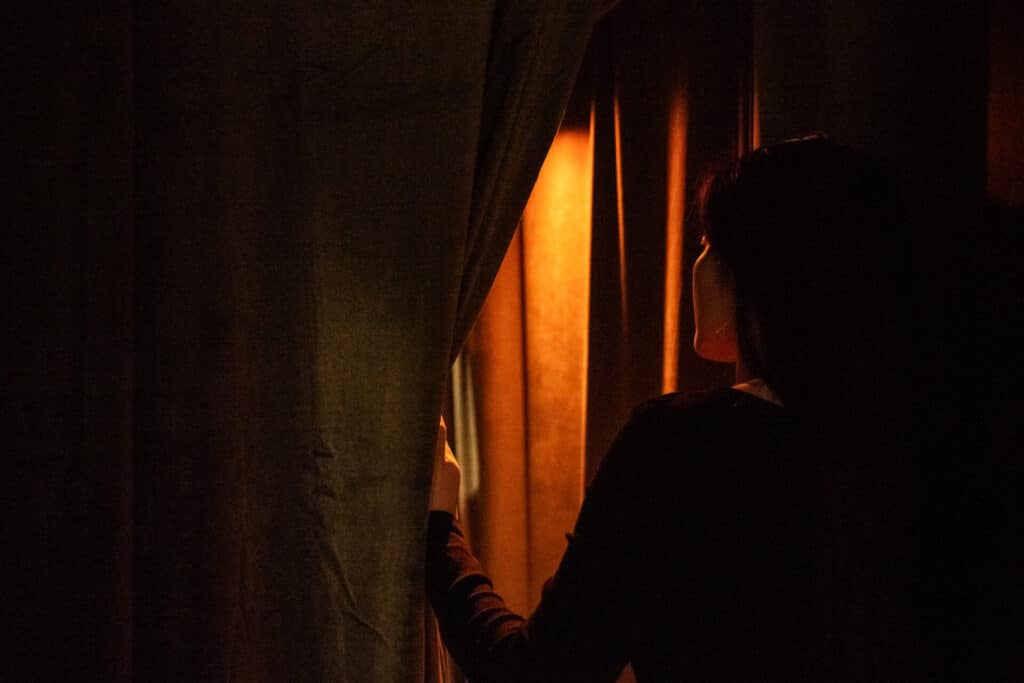
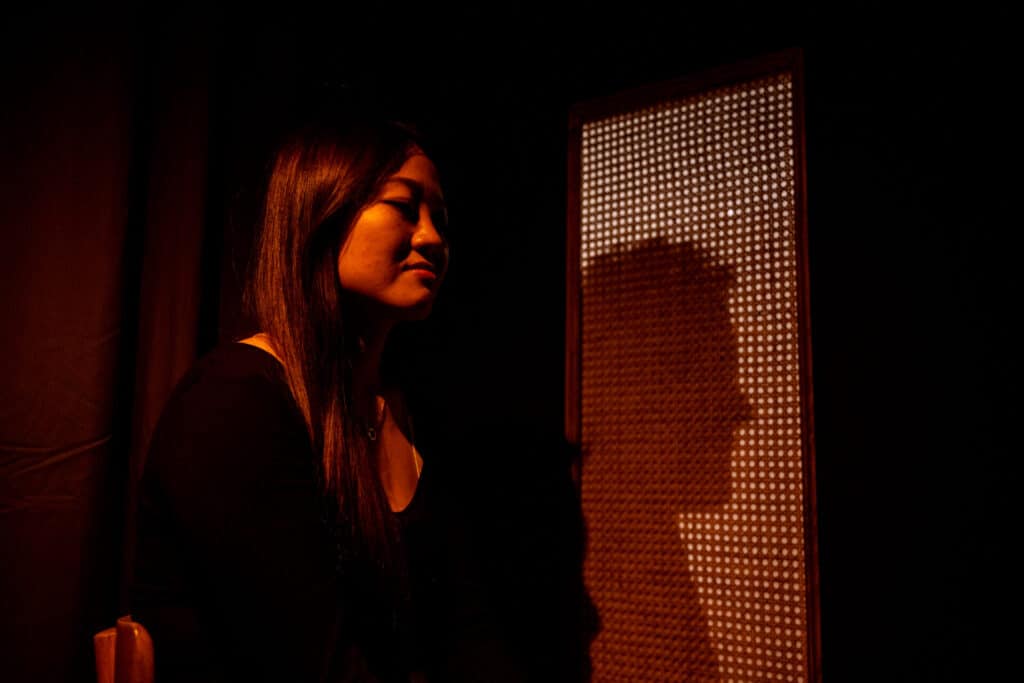
Photo Credits: JMA Photography



